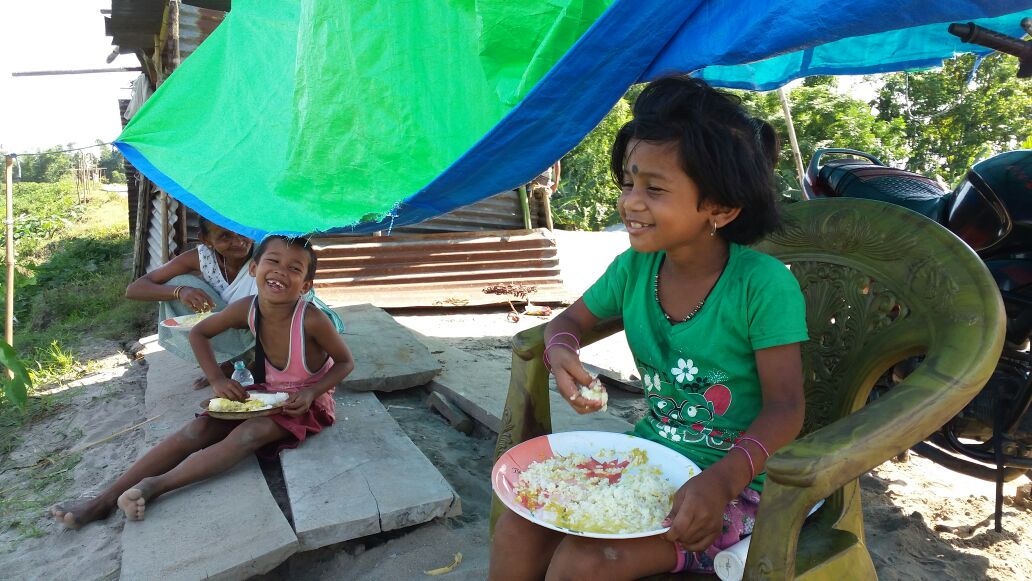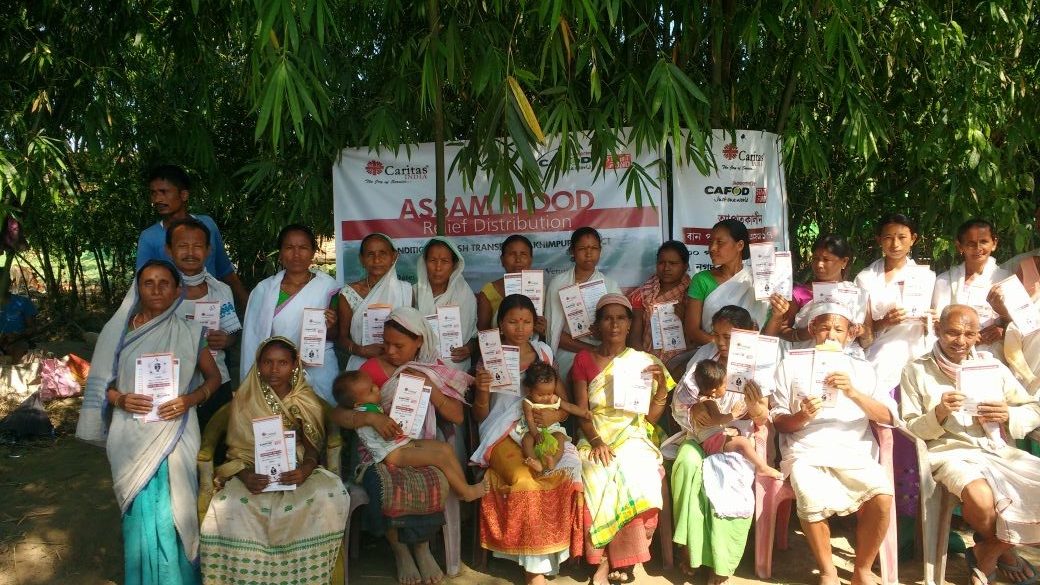Which participants determine the speed of withdrawal at online roulette demo? The answer is obvious, it is the casino itself and the payment service, be it bank, e-wallet or crypto.
ASSAM IS REELING UNDER FLOODS AGAIN, HERE ARE 4 KEY PROBLEMS FACED BY CHILDREN
Low attendance: The enrolment of the children in the LP School is high approximately 80% however, the attendance in the school is very less before and after flood. One of the important reasons is due to the frequent flood which is leading to displacement of the children every year.
Loss of learning time: During flood, schools remain closed for weeks together, which sometimes become months, depending on the degree of the flood. Parents become clueless on how to keep their children engaged with the syllabus. The teachers also have no plan for the children.
Lack of play-space: Reduced living space in the flood relief camps leaves almost no recreational room, essential for children to grow normally. Transliterating an old English proverb to describe this situation will read like “All work and no play, makes Janki a dull girl”. Post the flood, it takes months before children can enjoy the comfort of a home and it is not until the parents would have toiled hard to repair the damages their little village huts would have succumbed to.
Lack of preparedness: For families that are living on the bank of river Brahamaputra, flood is an annual phenomenon, “at least for the last 20 years” as described by villagers around here. Nevertheless, it is found that children lose their study books and materials to flash floods every year, ask they lack knowledge on preparedness. At the onset of any flood, the primary focus of these families is to save mostly edible goods and other valuables. Children’s study books hardly are in the picture. This however adversely affects children’s study with serious consequences in their future.
What can be done to help these children?
To answer the question, we must ask a few more relative questions. Is it possible to safeguard the dreams of these children, ensure that they grow like and at par with other children in our country? Is it possible to protect their right to education and dignity of life, while ensuring uninterrupted learning even during and after the flood?
And, if the answer to all these questions is a YES, the next question would be HOW?
Caritas India, a national non-profit organization based in Delhi has joined hands with HCL foundation to answer these questions in affirmative with a strong will to find solution to these problems.
The team have identified 12 flood prone villages in Lakhimpur of Assam. Each village will work on a concept call “My Evening School for resilience building”.
These schools will conduct syllabus based regular classes with special lessons on disaster preparedness. A total of 1000 school children will benefit from this innovative project within a period of six months.
Besides regular studies, extra-curricular activities will keep the children fruitfully engaged, taking help of experts and trained personnel.
These villages have already been part of the relief and flood response program carried out by Caritas India and HCL Foundation and this project is the continuation with focussed on education.
“Besides the children, their parents, teachers and care givers will also be counselled,” informed Anjan Bag, person heading the project at Caritas India. He said that interested youth from the area will be identified and motivated to work as volunteers.
Analyses
Natural disasters, particularly the phenomenon of overflowing Brahmaputra river is an annual occurrence in Assam. Obviously, those residing along the river bank or closer to the river are the first and worst hit, Ms. Lee Paul, advocacy manager at Caritas India wrote in her analyses.
She says that the people’s locational vulnerability is directly linked with the social and economic position they occupy within the local society. And this can be corroborated from the fact that most affected and being reached out to by Caritas India in Lakhimpur district, are those who are marginal farmers or daily wage earners.
Unfortunately, the undocumented losses of the daily wagers and those into lease farming goes unrecognised even in the official compensation norms of the State and Centre. The state of Odisha, during cyclone Phailin did notify the compensation coverage to share croppers in 2013 as a good practice. However, this precedence has not been popularised and followed by the Centre or the state governments.
Coming back to Assam floods, Ms. Lee says that the humanitarian agencies are delivering their mandate of reaching much needed lifesaving relief materials to the flood victims, prioritising the most vulnerable in terms of their capacity to survive without aid. Yet, this will be based on the limited resources available and accessible to the aid agencies only to compliment Government response. The state being duty bound to protect its citizens, and the humanitarian stakeholders now need to seriously think about pre-disaster actions, in areas that are prone to annual flooding and cyclones.
The pre-monsoon preparedness of the system and the people in vulnerable locations need to be in place; and disaster mitigation plans need to be set much ahead of the monsoons. Logistically, this will save much loss to life and property; while safety measures and early warning systems need to be strengthened for communities living closer to the river bank to make alternative arrangements. Most important will be seeing to their economic recovery, to help them rebuild their lives.
Well thought and thoroughly planned pre-monsoon actions are far better than being pressed into reactive actions to live up to real Disaster Risk reduction (DRR) as committed under the Sendai Framework of Disaster Risk Reduction.
Highlight of the response and relief in 2017 so far by Caritas India in collaboration with HCL, Start Network, Caritas Germany, CAFOD and SCIAF.
Relief done 2017
- Hygiene kits to 1000 families in Assam
- Hygiene kits to 1000 families in Mizoram
- 2 Medicated bed nets each to 1000 families in Assam
- Cash support to 300 families in Mizoram
- Medical support to over 800 flood hit people in Assam
- Medical help to 700 flood hit people in Mizoram
Ongoing relief 2017
- Hygiene kits to 1600 families in Assam
- Cash support to 1600 families in Assam
- Evening school for 1000 affected students with special lessons on disaster preparedness
Emerging Needs 2017 in the present situation
Assam State Disaster Management Authority (ASDMA) data shows fresh floods inundating new areas – rendering more families homeless and without livelihood.
Plan: In the coming days, we hope to include 5000 worst affected families from Karimganj, Morigaon, Lakhimpur, Bongaingaon being the worst affected districts in Assam. More support will be continued in Mizoram. Assessment report is awaited from Manipur.
In Assam, we hope to support the needs for temporary shelter, livelihood, public health, food and nutrition, WASH and psycho-social counseling.
History of Emergency responses
Looking back in the last 5 years, Caritas India has responded to almost every emergency in the Northeast befitting a population of 1.2 lakhs approximately. The table below showcases a few major ones with number of benefiting families in the sectors of health, cash support, temporary shelter, education, WASH, livelihood, livestock and food.
| #No. | Emergency response and year | No. of benefiting families |
| 1. | Assam Floods 2012 | 10500 |
| 2. | Assam Ethnic Conflict 2012 | 1725 |
| 3. | Assam Ethnic Conflict 2012 (2) | 1000 |
| 4. | Assam Ethnic Conflict 2014 | 300 |
| 5. | Assam Flood 2016 | 2250 |
| 6. | Assam Flood 2017 | 5360 |
| 7. | Mizoram Flash Flood 2017 | 1440 |
| Total | 22575 | |
Copyright Caritas India 2013 ! Developed by Neural Info Solutions Pvt. Ltd.




















































